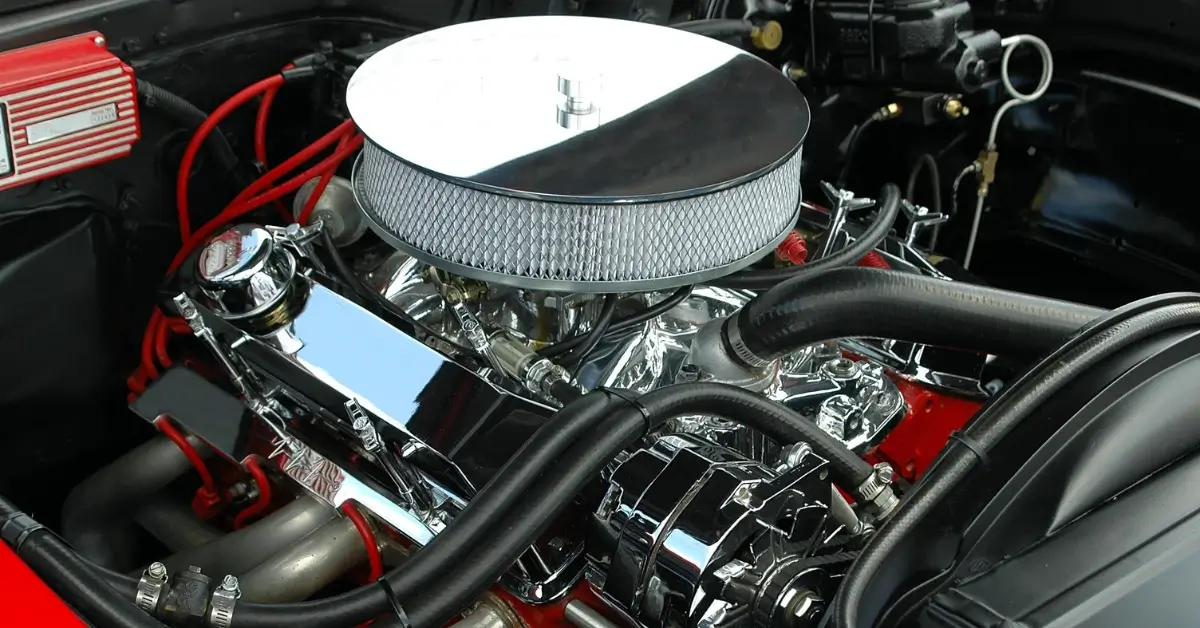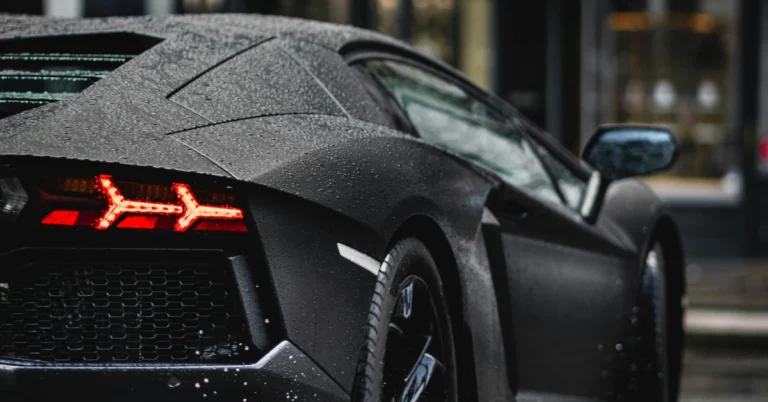Are you tired of driving around in a car that looks and smells like a wet dog?
It’s time to give your ride a deep clean!
A thorough cleaning of your car’s interior not only makes it look and smell better, but it can also help eytend the life of your vehicle. In this article, we’ll show you how to deep clean your car like a pro.
First things first, let’s gather our supplies. You’ll need a vacuum cleaner with various attachments, microfiber cloths, a soft-bristled brush, an all-purpose cleaner, glass cleaner, and a leather cleaner if your car has leather seats. You can also purchase specialized car cleaning products. Once you have everything, it’s time to get to work!

Preparing for Deep Cleaning a Car
When it comes to deep cleaning a car, preparation is key. Before we start, we need to gather all the necessary supplies and inspect the vehicle to identify areas that require special attention.
Gathering Supplies
To ensure that we have everything we need, we should make a list of supplies required for the job. Some essential items include:
- Cleaning solution: We can choose from a variety of car cleaning solutions available in the market or make our own by mixing water and dish soap or vinegar.
- Microfiber towels: These are gentle on the car’s surface and do not leave any scratches or streaks.
- Vacuum cleaner: We can use a handheld or cordless vacuum cleaner to remove dirt and debris from the car’s floor and seats.
- Brush or sponge: These can be used to scrub stubborn stains and grime from the car’s upholstery.
- Glass cleaner: We can use a glass cleaner to clean the windows and mirrors of the car.
- Trash bags: We can use these to collect any trash or debris that we find in the car.
Initial Vehicle Inspection
Before we begin deep cleaning a car, we should inspect it thoroughly to identify areas that require special attention. Some things to look out for include:
- Stains and spills: We should inspect the car’s upholstery and carpets for any stains or spills that may require special treatment.
- Pet hair: If we have pets, we should look out for pet hair on the car’s seats and carpets.
- Dust and debris: We should check the car’s air vents, dashboard, and other hard-to-reach areas for dust and debris.
- Odors: We should sniff the car’s interior to identify any unpleasant odors that need to be eliminated.
By gathering all the necessary supplies and inspecting the vehicle, we can ensure that we are fully prepared for deep cleaning the car.
Interior Cleaning
When we deep cleaning a car, the interior is just as important as the exterior. From vacuuming to shampooing carpets and upholstery, to cleaning leather surfaces and detailing the dashboard and console, a thorough interior cleaning will leave your car looking and feeling like new.
Vacuuming the Interior
The first step in deep cleaning a car’s interior is to thoroughly vacuum the entire space. Use a vacuum with a crevice tool attachment to reach tight spaces and corners. Don’t forget to remove the floor mats and vacuum them separately. For a more thorough clean, consider using a brush attachment to loosen dirt and debris from the carpets and upholstery.
A tip from me: use rubber mats in winter and fabric mats in summer, makes life easier.
Shampooing Carpets and Upholstery
Once the interior has been vacuumed, it’s time to shampoo the carpets and upholstery. Use a high-quality carpet and upholstery cleaner and follow the manufacturer’s instructions carefully. Be sure to test the cleaner on an inconspicuous area first to ensure it won’t damage the fabric.
Cleaning Leather Surfaces
For cars with leather interiors, it’s important to use a cleaner specifically designed for leather surfaces. Avoid using harsh chemicals or abrasive materials that can scratch or damage the leather. Apply the cleaner with a soft cloth and gently rub the surface, then wipe away any excess cleaner with a clean, dry cloth.
Detailing Dashboard and Console
The final step in deep cleaning a car’s interior is to detail the dashboard and console. Use a soft, microfiber cloth to dust the surfaces and remove any dirt or debris. For hard-to-reach areas, use a soft-bristled brush or cotton swab. Finish by applying a protectant to the dashboard and console to help prevent fading and cracking.
By following these steps, we can give the interior of our car a deep clean that will leave it looking and feeling like new.
Exterior Washing
When we deep cleaning a car, the exterior is just as important as the interior.
A clean exterior not only looks good, but also helps protect your car’s paint and finish. In this section, we’ll cover the three main steps to properly wash the exterior of your car: Pre-Wash Rinse, Applying Soap, and Scrubbing Tires and Wheels.
Pre-Wash Rinse
Before applying any soap or cleaner to your car, it’s important to give it a thorough rinse to remove any loose dirt and debris. This will help prevent scratches and swirl marks when you start scrubbing. Use a hose or pressure washer to rinse the car from top to bottom, making sure to get in all the nooks and crannies.

Applying Soap
Once you’ve given your car a pre-wash rinse, it’s time to apply soap.
Use a high-quality car shampoo or all-purpose cleaner and mix it with water in a bucket according to the manufacturer’s instructions. Start at the top of the car and work your way down, using a wash sponge to apply the soap in a circular motion.
Be sure to rinse your sponge frequently to avoid scratching the paint.
Scrubbing Tires and Wheels
Tires and wheels can be some of the dirtiest parts of your car, so it’s important to give them a thorough scrubbing.
Use a tire and wheel cleaner and a stiff-bristled brush to scrub away brake dust, dirt, and grime. Be sure to get in all the crevices and hard-to-reach areas. Once you’ve scrubbed the tires and wheels, rinse them thoroughly with water.
By following these three simple steps, you can give your car’s exterior a deep clean that will leave it looking like new. Remember to always use high-quality products and tools, and to take your time to avoid damaging your car’s finish.
Polishing and Waxing
After thoroughly cleaning the car, it’s time to move on to the polishing and waxing stage. This is where we really bring out the shine and protect the car’s paint for the long haul. In this section, we’ll cover the steps for applying car polish, buffing for shine, and waxing for protection.
Applying Car Polish
Before we can start waxing, we need to apply car polish to the paint.
This step is crucial because it removes any imperfections and creates a smooth surface for the wax. We recommend using a dual-action polisher for this step, as it will make the job much easier and more effective.
To apply the polish, we’ll need a foam pad that attaches to the polisher.
Apply a small amount of polish to the pad and spread it evenly across the paint.
Work in small sections, and be sure to overlap each pass to ensure complete coverage.
Once the polish has been applied, wipe away any excess with a microfiber towel.
Buffing for Shine
Attach a clean foam pad to the polisher and apply a small amount of wax to the pad. Spread the wax evenly across the paint, working in small sections and overlapping each pass. Once the wax has been applied, use the polisher to buff the paint to a high shine. Be sure to work in small sections and overlap each pass to ensure complete coverage.
Waxing for Protection
The final step in deep cleaning a car is waxing for protection.
Waxing is essential because it provides a protective layer between the paint and the elements. We recommend using high-quality carnauba wax for this step, as it will provide the best protection and shine.
To apply the wax, we’ll need a foam pad that attaches to the polisher. Apply a small amount of wax to the pad and spread it evenly across the paint. Work in small sections, and be sure to overlap each pass to ensure complete coverage.
Once the wax has been applied, wipe away any excess with a microfiber towel.
That’s it! By following these steps for polishing and waxing, we can bring out the shine and protect the car’s paint for the long haul.

Windows and Mirrors
Keeping your car’s windows and mirrors clean is essential for good visibility while driving and deep cleaning a car.
Dirty windows can impair your vision and increase the risk of accidents. Cleaning your car’s windows and mirrors is not difficult, but it does require the right tools and techniques.
Next, we will cover the steps for cleaning and polishing your car’s windows and mirrors.
Cleaning Windows
To clean your car’s windows, start by using a glass cleaner that is specifically designed for automotive use.
Spray the cleaner on the window and use a microfiber towel to wipe away any dirt or grime. For stubborn stains, you can use a white vinegar and water solution.
Mix equal parts of vinegar and water in a spray bottle and apply it to the window. Let it sit for a few minutes before wiping it away.
Make sure the mixture doesn´t touch the paint!
When cleaning the windows, make sure to also clean the window seals and tracks.
Use a soft-bristled brush to remove any dirt or debris from the seals and tracks.
This will help prevent dirt from getting inside the car when you roll down the windows.
Polishing Mirrors
Polishing the mirrors will not only make them look shiny and new but will also help prevent streaks and smudges.
To polish your car’s mirrors, start by cleaning them with a glass cleaner.
Once they are clean, apply a small amount of glass polish to a microfiber towel and rub it onto the mirror in a circular motion. Use a clean microfiber towel to buff the mirror until it is shiny and streak-free.
In conclusion, keeping your car’s windows and mirrors clean is essential for good visibility while driving.
With the right tools and techniques, you can easily clean and polish your car’s windows and mirrors. By following the steps outlined in this section, you can ensure that your car’s windows and mirrors look clean and shiny at all times.
My Tip: Try Toothpaste for polishing Mirrors!
Engine Bay Cleaning
When it comes to deep cleaning a car, the engine bay is often overlooked.
However, it is an essential part of car maintenance and should not be neglected.
A clean engine bay not only looks good but also helps to prolong the life of your car’s engine. In this section, we will discuss how to properly clean your engine bay.
Degreasing the Engine
The first step in cleaning the engine bay is to degrease the engine. This involves using an all-purpose cleaner (APC) to break down dirt, grime, and oils in your engine bay. According to Car Detailing Planet, an APC such as Meguiar’s All-Purpose Cleaner diluted 1:10 or 1:5 is essential for this task.
Apply the APC to the engine bay and let it sit for a few minutes to allow it to break down the dirt and grime.
Once the APC has had time to work, use a detailing brush to agitate the dirt and grime.
Be sure to get into all the nooks and crannies of the engine bay.
Rinse the engine bay with a hose or pressure washer, being careful not to spray water directly onto any electrical components.
Rinsing and Drying
After degreasing the engine, it’s time to rinse and dry the engine bay.
Rinse the engine bay thoroughly with a hose or pressure washer to remove any remaining dirt and grime. Be sure to rinse all the nooks and crannies of the engine bay.
Once the engine bay has been rinsed, it’s time to dry it.
Use a microfiber towel or air compressor to dry the engine bay. Be sure to dry all the electrical components thoroughly to prevent any damage.
Deep cleaning your car’s engine bay is an important part of car maintenance. By following these steps, you can ensure that your engine bay stays clean and in good condition.
Final Touches
Now that we’ve thoroughly cleaned the whole car, it’s time to add some final touches to make it feel brand new.
Upfront, we’ll cover three essential final touches: air freshening, tire dressing, and replacing floor mats.
Air Freshening
After deep cleaning a car, it’s important to eliminate any lingering odors. One of the easiest and most effective ways to do this is by using an air freshener. There are many different types of air fresheners available, including sprays and hanging air fresheners. We recommend using a spray air freshener, as it can be easily applied to the interior of the car.
To use a spray air freshener, simply shake the can and spray it evenly throughout the car.
Be careful not to overspray, as this can cause the interior to become too damp.
Allow the air freshener to dry for a few minutes before getting back into the car.
Tire Dressing
Tires can become dull over time, but adding tire dressing can give them a shiny, new look.
There are many different types of tire dressing available, including sprays and gels.
We recommend using a gel tire dressing, as it tends to last longer than sprays.
To apply tire dressing, first make sure the tires are clean and dry.
Then, apply a small amount of dressing to a clean sponge or cloth and rub it onto the tire in a circular motion.
Be sure to apply the dressing evenly to avoid any streaks or blotches.

Replacing Floor Mats
Floor mats can become worn and dirty over time, but replacing them can make a big difference in the appearance of our car’s interior.
Before purchasing new floor mats, make sure to measure the size of the old ones to ensure a proper fit.
To replace the floor mats, simply remove the old ones and place the new ones in their place. Make sure to secure them properly to prevent any slipping or sliding.
By following these final touches, we can ensure that our car looks and smells its best after a deep cleaning.
FAQ
How do you deep wash a car?
Remove items that don’t belong in the car, and dispose of trash.
Step 2: Vacuum Floor Mats and Blow. …
Step 3: Dust Cracks and Crevices. …
Step 4: Vacuum the Floor and Upholstery. …
Step 5: Wipe Down the Dashboard. …
Step 7: Wash the Windows. …
Step 8: Replace the Floor Mats. …
Step 9: Hose Down the Exterior. …
Step 10: Lather and Scrub.
How long does it take to deep clean the inside of a car?
A quick interior detail might take two hours, while a comprehensive exterior detail might take up to two days. If the vehicle is detailed regularly, a small coupe, hatchback, or sedan will take four hours or more. It will take at least seven hours for extra-large trucks and minivans.
How do you dry a car after deep cleaning?
Once you’re done cleaning, take a towel and soak up as much water as you can from the seats. You may want to use multiple towels per seat. This method helps out a lot as you’re removing the top level water/cleaner. If you can, leave your car outside in the sun with the windows/door opened for a few hours.
Have you already finished Deep Cleaning a car or do you want to start?
We hope this guide helped you to find a beginning. We would love to hear your Point of View, so let us know in the Comments or via Mail, till then, see you next time when it says again…
Let´s Ride!





